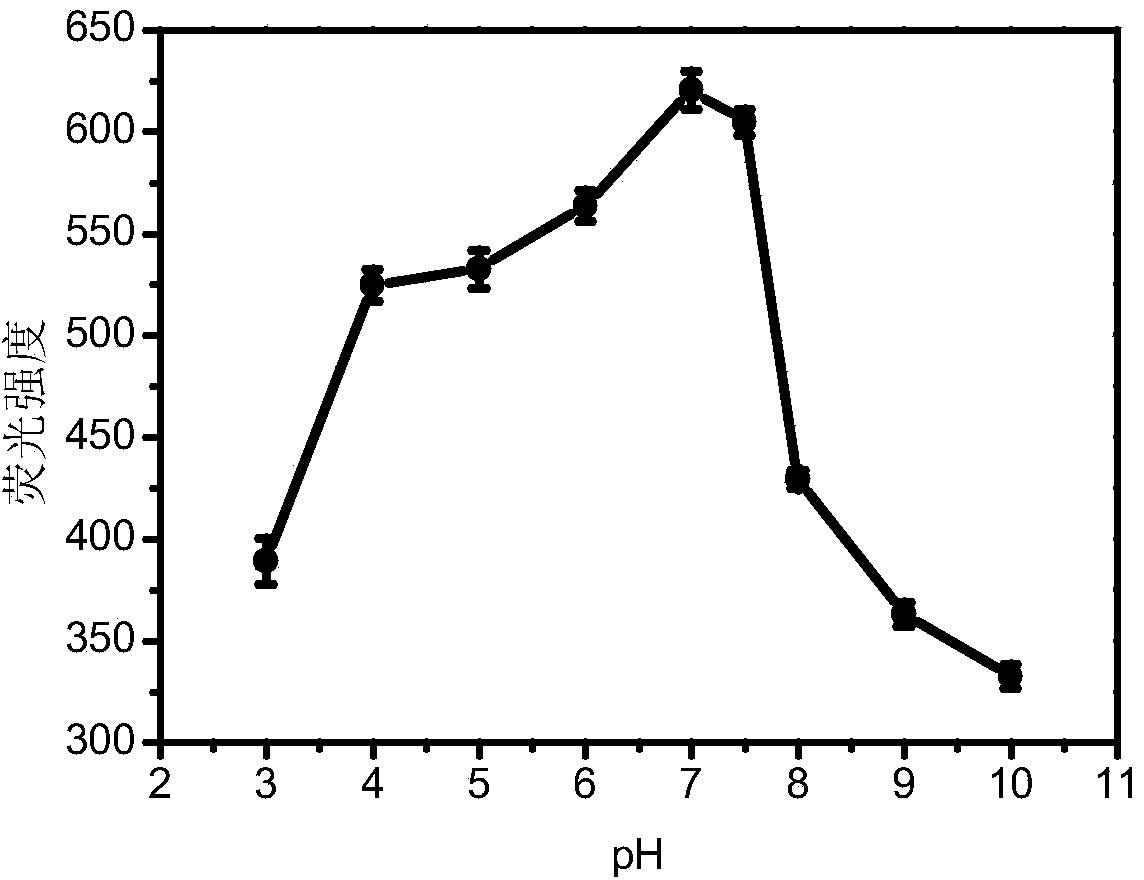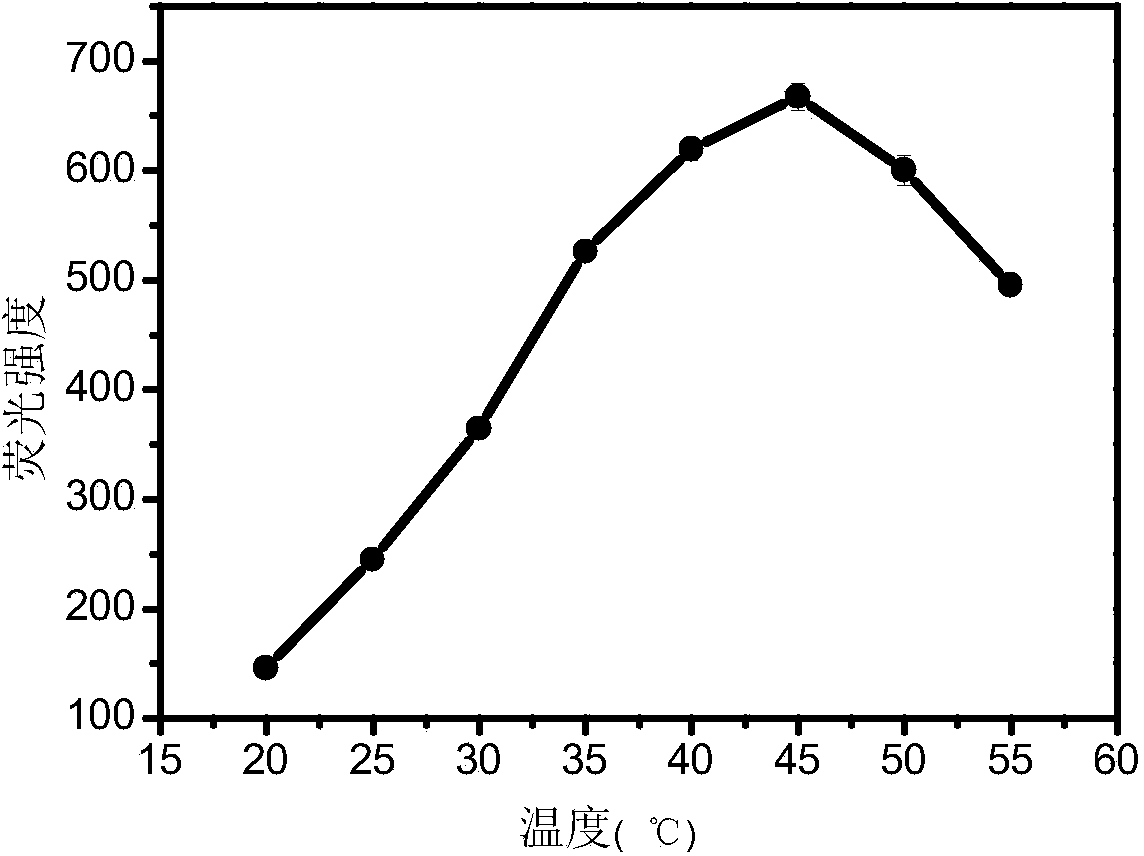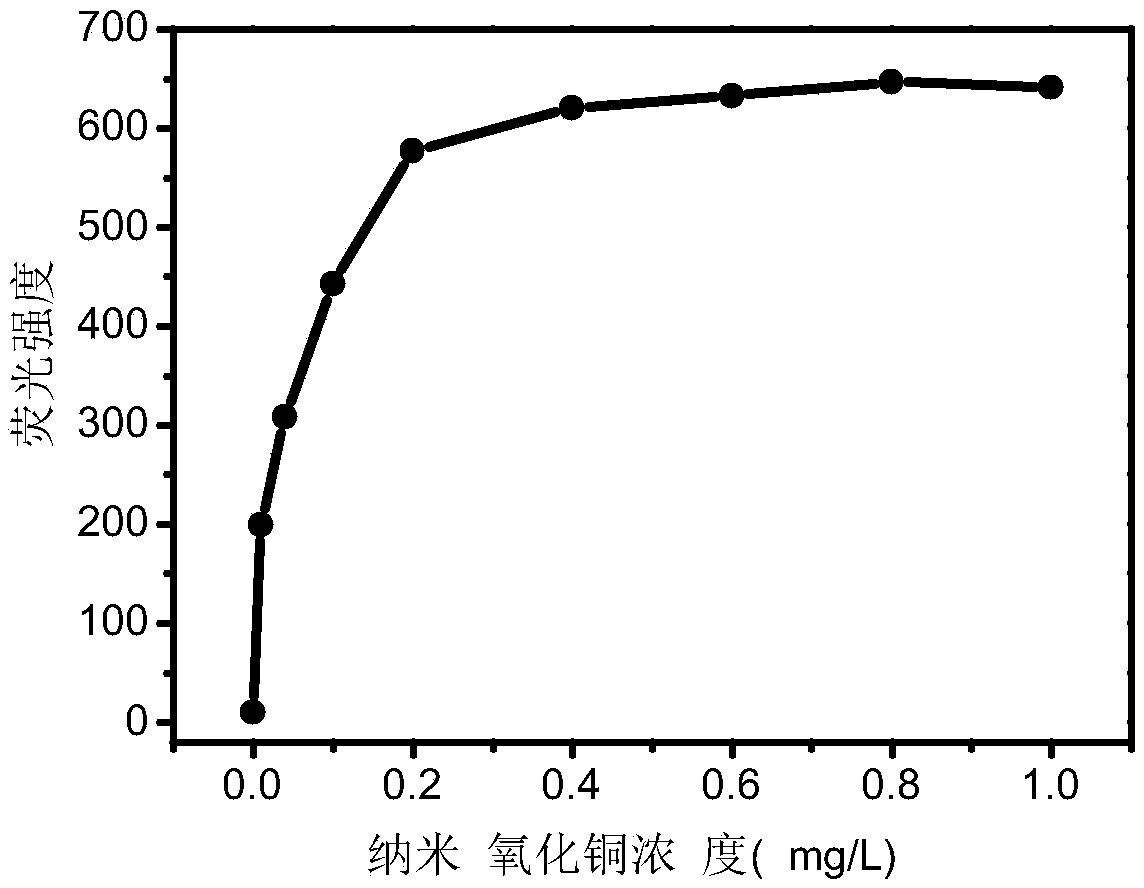Fluorescence analysis method for determining glucose by employing nanometer copper oxide as simulated peroxide
A nano-copper oxide and peroxidase technology, applied in analytical chemistry and nano fields, can solve the problems of poor selectivity, interference, false increase of blood glucose measurement value, etc., and achieve low cost, low sample demand and good reproducibility. Effect
- Summary
- Abstract
- Description
- Claims
- Application Information
AI Technical Summary
Problems solved by technology
Method used
Image
Examples
example 1
[0038] The specific preparation steps of nano-copper oxide are as follows: (1) Take 150 ml of 0.02 mol / L copper acetate solution and 0.5 ml of glacial acetic acid into a three-necked flask equipped with a condenser, stir and heat to boiling; (2) Quickly add 0.04 g / ml sodium hydroxide solution 10 ml, continue to stir for 5 minutes after adding, and obtain brown copper oxide precipitate; (3) Centrifuge the black copper oxide precipitate obtained from the reaction, wash with absolute ethanol three times, and dry under reduced pressure, that is A nano-copper oxide powder with a diameter of 6 nm was obtained.
example 2
[0040]0.8 mL of terephthalic acid with a concentration of 18.75 mmol / L, 0.5 mL of hydrogen peroxide with a concentration of 1 mol / L and 50 μL of nano-copper oxide prepared in Example 1 with a concentration of 40 mg / L were added to 3.65 mL of In 200 mmol / L phosphate buffer (pH 3-10) of different pH, mix and shake well and place in a warm bath at 45 °C. After 20 minutes, measure its fluorescence intensity at 421 nm (excitation wavelength is 315 nm). Such as figure 1 As shown, the fluorescence intensity reached a maximum at pH 7.0.
example 3
[0042] 0.8 mL of terephthalic acid with a concentration of 18.75 mmol / L, 0.5 mL of hydrogen peroxide with a concentration of 1 mol / L and 50 μL of nano-copper oxide prepared in Example 1 with a concentration of 40 mg / L were added to 3.65 mL of In 200 mmol / L phosphate buffer (pH 7.0), mix and shake well, place in different temperature (20-55 ℃) warm bath, measure its fluorescence intensity at 421 nm after 20 minutes (excitation wavelength is 315 nm) . Such as figure 2 As shown, the fluorescence intensity reached the maximum at 45 °C.
PUM
 Login to View More
Login to View More Abstract
Description
Claims
Application Information
 Login to View More
Login to View More - R&D
- Intellectual Property
- Life Sciences
- Materials
- Tech Scout
- Unparalleled Data Quality
- Higher Quality Content
- 60% Fewer Hallucinations
Browse by: Latest US Patents, China's latest patents, Technical Efficacy Thesaurus, Application Domain, Technology Topic, Popular Technical Reports.
© 2025 PatSnap. All rights reserved.Legal|Privacy policy|Modern Slavery Act Transparency Statement|Sitemap|About US| Contact US: help@patsnap.com



